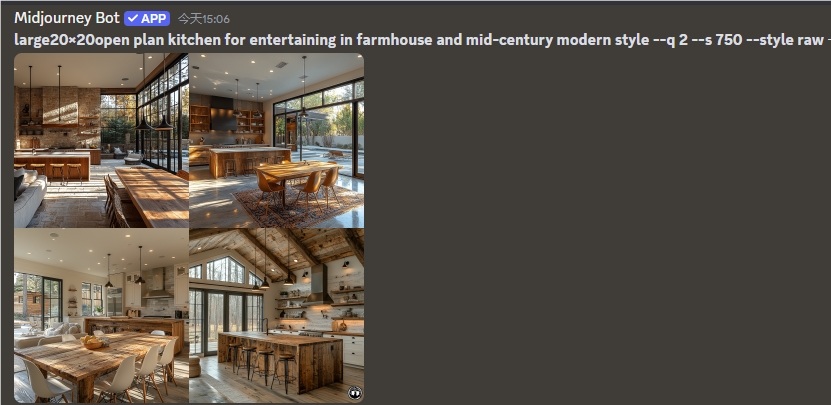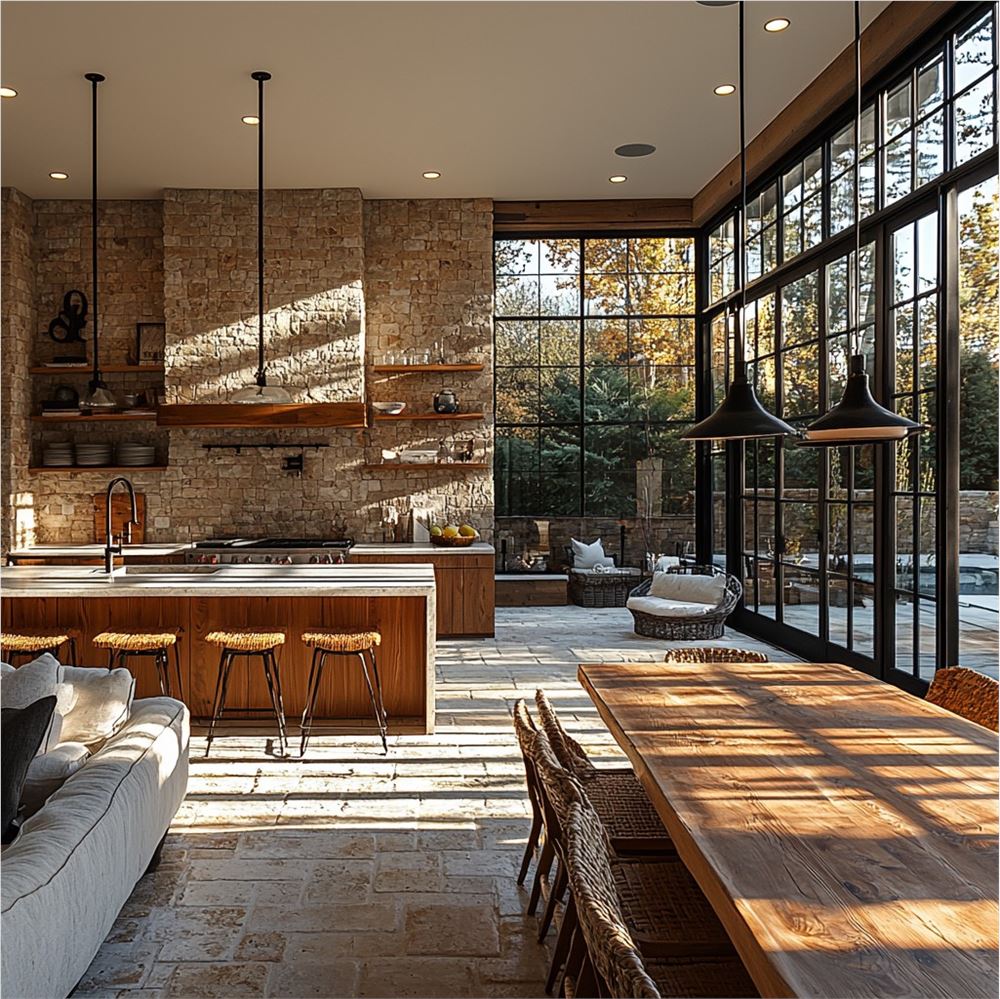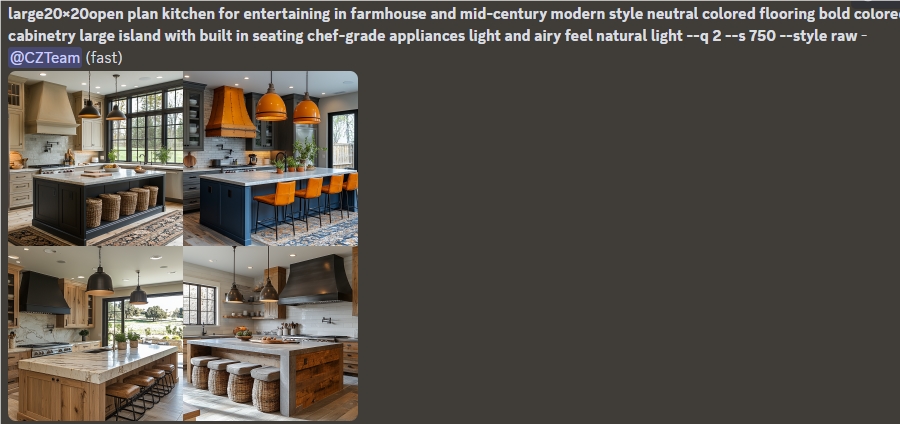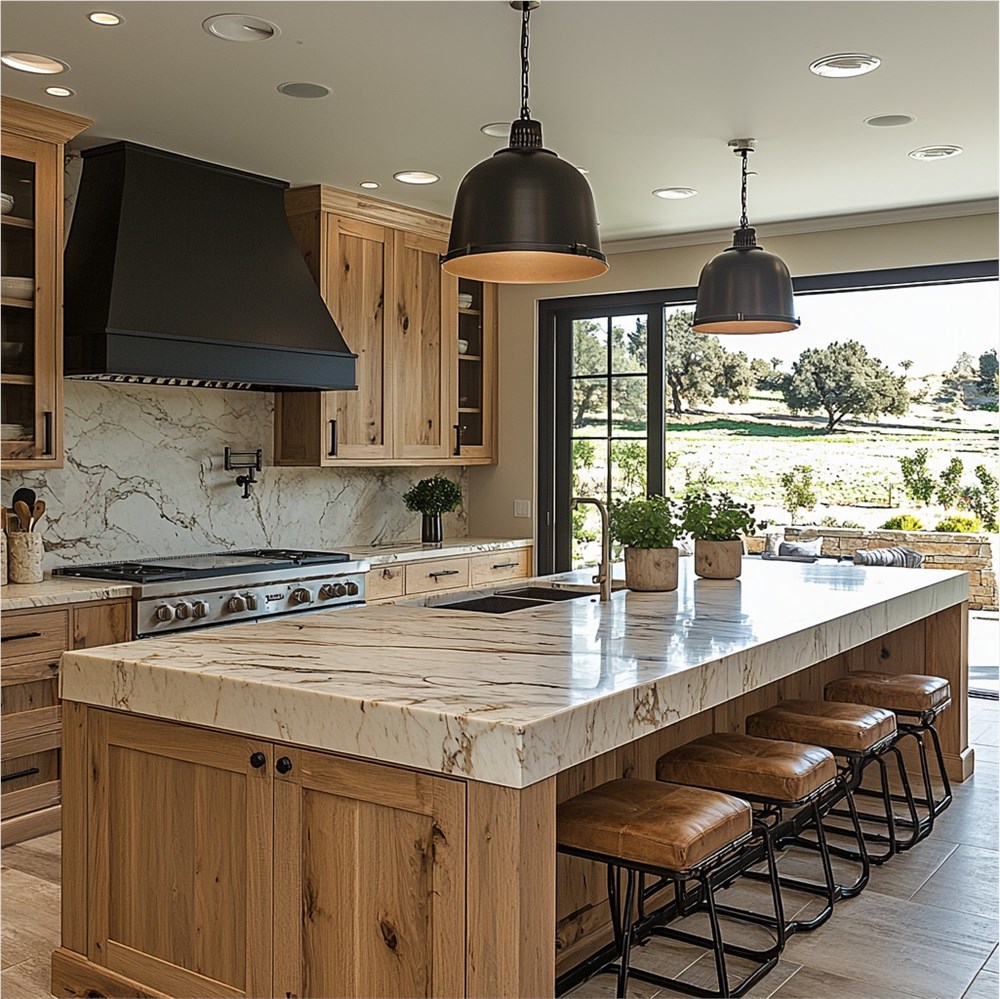As the field of interior design booms, emerging technologies such as generative artificial intelligence (AI) are profoundly changing the way consumers participate in design decisions. AI tools such as Midjourney can quickly generate vivid and realistic interior design images based on simple text prompts, providing unprecedented convenience for design enthusiasts. However, using Midjourney effectively requires learning and mastering specific language skills in order to accurately express design intentions and obtain ideal images. This article will provide a guide to help you better use Midjourney for interior design, from collecting inspiration to refining tips, and gradually improving your design expression capabilities.
Interior design and decoration planning is evolving rapidly, and new technological tools such as generative artificial intelligence (AI), immersive metaverse spaces, and augmented reality (AR) are helping consumers become more actively involved in their design decisions.
Generative AI is especially suitable for design enthusiasts. By feeding simple text prompts into generative AI like Midjourney, vivid and expressive images can be generated in seconds.
While Midjourney is very easy to use, in order to get the desired image, the prompts must be carefully constructed using language consistent with your interior design goals, so the user must actively anticipate the robot's response to instructions. Here is a guide to creating a successful Midjourney interior design tip.
How Midjourney works
The user accesses Midjourney through a Discord account and enters a prompt that begins with /imagine.
The Midjourney bot algorithmically generates eye-catching, colorful images. While Midjourney is one of several text-to-image AIs available, including Dall-E, the quality and detail of images produced by Midjourney make it particularly suitable for interior design.
A word of caution for users dabbling in Midjourney: the resulting images are indeed inspiring, but they lack real-world functionality. There are no specifications for the ideas presented, nor can you buy the work you see.
Instead, plan to use your images as a springboard to pitch your ideas to your partners, builders, contractors, or designers, or use the images to find similar-looking colors, products, and finishes on the market.
It’s a quick way to ideate and inspire creativity, rather than a blueprint.
“Keep in mind that AI-generated images are conceptual starting points for future projects and are not perfect,” says interior designer Gloribell Lebron.
Decide which designs appeal to you before you start
In order to effectively guide Midjourney's interior design tips, you need to be clear about your aesthetic goals.
"Before diving into a generative AI tool like Midjourney, it's important to be clear about what you want to achieve," Lebron said.
Even if you’re using cutting-edge generative AI, it’s a good idea to take a traditional approach to gathering and organizing inspiration.
“Start by gathering inspiration from a variety of sources, such as design magazines, Pinterest, etc. Identify those elements that resonate with your style, such as color combinations, textures and furniture types,” she says.
Bring all of these ideas together in a mood board, which is essentially a collection of design inspiration that can include physical samples and pictures, or it can be done digitally.
“A mood board can help you refine your vision and serve as a reference point,” says Lebron.
Learn the language of interior design
One benefit of Midjourney is that it enables users to express interior design ideas visually, which can be useful for communicating concepts with a designer or builder, or even co-creating a wish list between families.
However, amateur design enthusiasts may know what they like but may not be familiar with the terminology needed to express their style.
As you explore mood board ideas, learn about different styles and design elements, remembering that styles are carefully curated to produce a specific aesthetic.
For example, some of the most popular styles currently include:
- **Japandi**: Embrace warm wood and purposeful spaces.
- **Rustic Style**: Rustic but focused on style, with rich textures and woods like wood framing and siding.
- **BEACH DESIGN**: Recreate the beach vibe using blues, greens, yellows and a conscious blend of indoor and outdoor connections.
- ** Mid-Century Modern **: Characterized by geometric design elements and an emphasis on simple, clean lines, it is experiencing a renaissance.
There are dozens of named styles, so decide which best reflects your aesthetic, or choose a combination of several styles, which are common in interior design.
Likewise, consider the language others use when writing. Scroll through design media and you'll often see words like moody, artsy, whimsical, tailored, textured and eclectic. Think about how adjectives are used to describe some of your favorite looks and incorporate similar descriptions into your prompt plan.
Go into details
The more information you provide to Midjourney, the better, so compile a list of design details to address.
"Creating effective language prompts for AI tools involves clarity and specificity," Lebron said.
"Start by describing in detail the overall style you desire, whether modern, minimalist or bohemian. Include specific details such as color combinations, material types and furniture styles," she says.
Some tips to remember:
- The first part of the tip is the most important, the details that follow will help refine the delivered image.
- Remember the location and layout of the room, approximate size or dimensions, architectural details, flooring, lighting, and any other descriptions to refine your aesthetic direction.
- Assign adjectives to the purpose of the room. Are you designing a cozy bedroom, an airy, spacious family room, or a fully functional chef's kitchen?
- Use simple, short prompts and strategically placed instructions. Don't use lengthy lists and avoid using short filler words. For example "a" or "the". Use commas to separate thoughts instead.
- Be specific because Midjourney has difficulty identifying abstract concepts.
“For example, instead of saying ‘modern bathroom,’ say ‘modern bathroom with a neutral color palette, white marble floor tile,’ and dark blue one sink vanity)' (see example below). The more detailed your prompts, the more accurate the resulting image will be," says Lebron.
Additional details will produce the results you want.
What should I do if I don’t get the picture I want?
"Start by refining your tips—add more specific details or tweak existing ones. Try different keywords and combinations to see which ones produce better results," says Lebron.
For example, in this image, the tips used are:
/imagine Large 20×20 open kitchen for rustic and mid-century modern style gatherings
(/imagine large20×20open plan kitchen for entertaining in farmhouse and mid-century modern style)


I like this, but I had a more colorful image in mind and felt the room was a bit dark, so I considered language that might make it brighter. Change the prompt to:
/imagine Large 20×20 open kitchen suitable for country and mid-century modern styles with neutral toned flooring, vibrant colored cabinets, large island, built-in seating, chef grade appliances, bright and airy feel, natural lighting
(/imagine large20×20open plan kitchen for entertaining in farmhouse and mid-century modern style neutral colored flooring bold colored cabinetry large island with built in chef seating-grade appliances light and airy feel natural light)


In the second image, in addition to the richer colors, you can see a stronger interplay of light, more light fixtures, fewer shadows, more reflective surfaces, and a greater emphasis on the view outside.
“Don’t be discouraged if you don’t get the image you want,” says Lebron, as it may take a few tries to find the effect you want.
In fact, the trial-and-error nature of Midjourney is often a welcome part of the creative process, as you can easily adjust the prompts to build different images.
All in all, Midjourney provides powerful visualization tools for interior design, but requires users to master clear and specific language skills to express design intentions. By learning the language of interior design, gathering inspiration, and refining tips, you can harness the full potential of Midjourney to transform your design ideas into stunning visuals. Continuous experimentation and improvement are key, and eventually you will find Midjourney to be a helpful assistant in your design process.